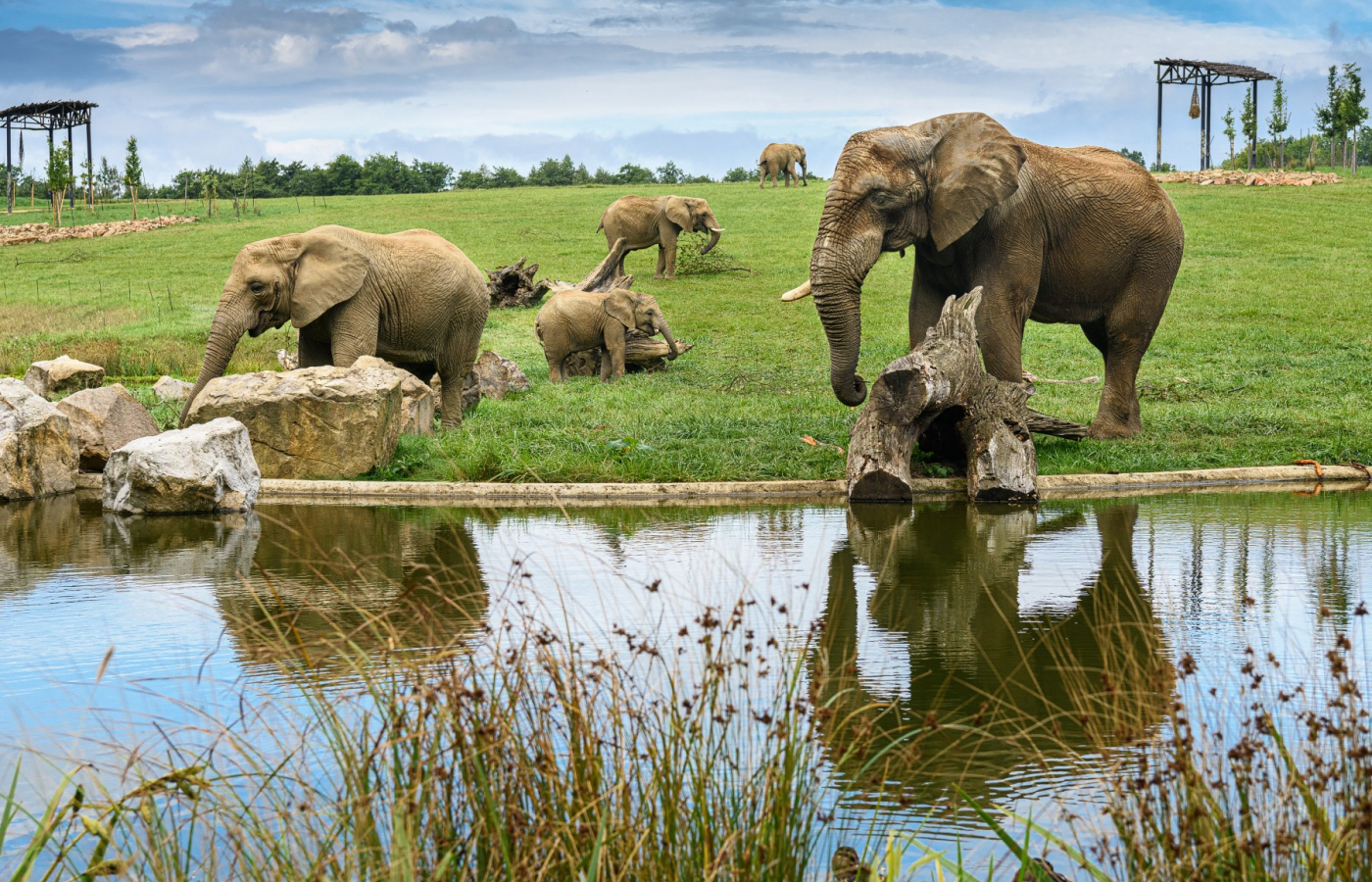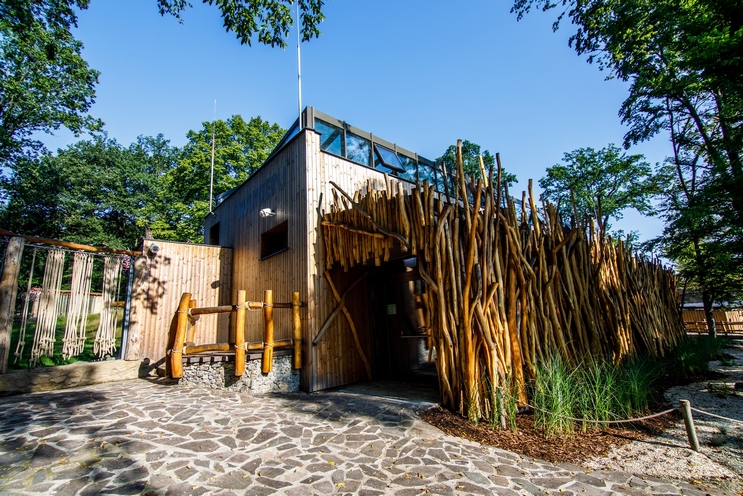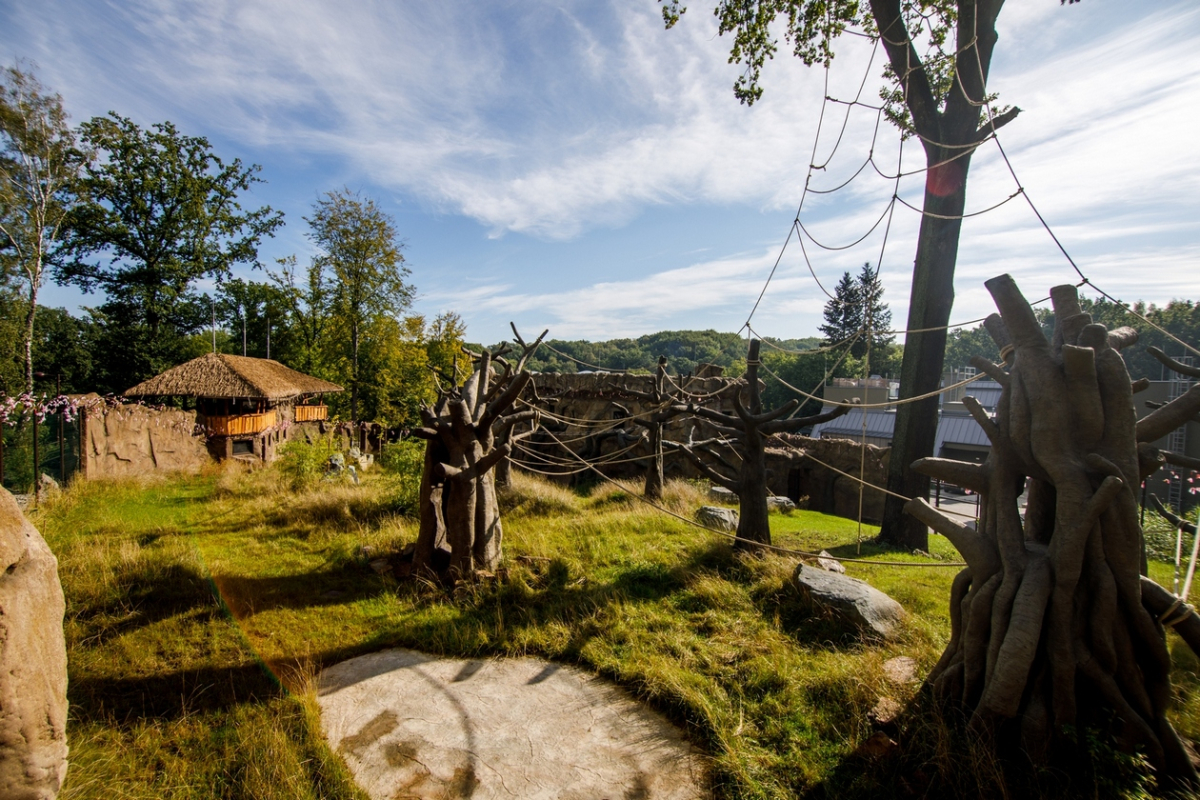These are a few of my favourites:
1. Colchester Zoo
My local zoo, and one I could visit every day and not get bored. They probably have among the strongest collections of large mammals in a UK zoo and whenever I visit there seems to be something new being added or changed. Some of my personal highlights from the place are the Patagonian sea lions (with the longest straight underwater tunnel in Europe), the sun bears and particularly the smooth-coated otters, which have among the best enclosures at the zoo and were for a long time probably the most successful breeding group of the species in Europe.
Of course, Colchester also have their new masterplan that was announced earlier this year which will add new enclosures for a number of the zoo's current animals (like the elephants, lions, orangutans and flamingos) and also bring in some new species such as gorillas, bonobos and okapi. There is definitely a bright future for the place.
2. ZSL London Zoo
This is a zoo with tons of history - some of their enclosures are probably among the oldest in the world still used for their original inhabitants (the giraffe house and paddock has remained home to giraffes since 1836), but the place doesn't feel stuck in the past. The enclosures for the tigers, lions, gorillas and giant tortoises were all excellent, the invertebrate house is one of my favourites in the UK and the bird collection is exquisite (especially important for me, as Colchester barely has any birds at all). It is unfortunate that the aquarium had to close, but it is hardly the zoo's fault (constrictive planning basically left no other option), but the opening of the new reptile house next year will definitely tempt me back there.
3. The Bug Parc
Invertebrates are pretty much my favourite animal group - there is so much variety that I could never tire of seeing new species. This place was a revelation, with over 200 species of invertebrate kept over three buildings. Just being able to walk between tanks and look at the differences between the 23 species of mantis, 16 species of millipede, 19 species of stick insect and 60 species of spider (just as examples) was one of my favourite zoo experiences ever. It is also great to see that they are trying to breed as many of their invertebrates as possible, to provide more sustainability in invertebrate keeping. It is definitely one of the top places on my agenda to return to.
4. Watatunga Wildlife Reserve
Probably the strangest zoo I have been to in recent years, but in a good way. It is a single paddock, 170 acres in size, that encompasses woodland, meadows and lakes and is driven around in golf buggies. It now probably has Britain's best collection of deer, with a smaller but lovely selection of antelopes mixed in. Add to that water buffalo, aoudad and a brilliant variety of ground-living birds mixed in (including great bustards, two species of crane, white storks, Javan peafowl, helmeted guineafowl and no fewer than eight species of pheasant) and it is a lovely and very unique atmosphere.
5. Wildwood Kent
Probably my favourite of the native species collections in the UK, this one contains a broad range of species from Britain's history. These include species that became extinct in the late Ice Age or during historical times (arctic fox, wisent, moose, brown bear, grey wolf, lynx and reindeer), a lot of species currently found in the UK such as badgers, red foxes, pine martens, wild boar, otters, red and fallow deer and beavers and also a couple of introduced species including the red-necked wallaby. They also do lots of work with conservation and reintroduce many of their animals back to the wild. I have just noticed that their arctic foxes are now kept in a walkthrough enclosure, so it may be worth returning to see that.
I haven't been to that many overseas zoos, and the ones I have visited range from the excellent (most of the Dutch zoos, mentioned below) to the godawful (the safari park on Mallorca - the drive-through was mostly fine but the walkabout section after really brought the whole place down).
6. Dutch zoos
When I was at university, I went on a week-long trip to visit four Dutch zoos as part of one of my modules (best module ever). I cannot decide which one is my favourite, so I will list my top three here. The Blijdorp in Rotterdam made an excellent first impression, with its amazing variety of animals including a massive aquarium that followed a specific course, travelling from the North Sea (with seabirds such as puffins) across the Atlantic (with sharks and sea turtles) to the Americas, travelling from the Caribbean (with its hutias and Antillean iguanas), around the Falklands (with king penguins), up the coast to the Sea of Cortez (with swift foxes, roadrunners and other desert animals) and finally ending in Alaska - unfortunately the last of the sea otters had left in the month prior to our visit.
Apenheul is one of the better specialist zoos I have visited, with a focus upon primates. They had excellent enclosures for every animal there and included a lot of walkthrough displays - there were walkthroughs for squirrel monkeys, Barbary macaques, a treetop walkthrough for red howler monkeys and various tamarins and a nocturnal walkthrough for owl monkeys. Add to that list the bonobos, gorillas, orangutans, woolly monkeys and proboscis monkeys, and it was definitely a trip to remember. Since my last visit, a couple of new walkthroughs have been added for Hanuman langurs and a mixed display for king colobus and talapoin monkeys - certainly a reason to return.
The final zoo of the four we visited was Burgers Zoo, which was again absolutely amazing. The place was divided mostly into distinct 'biomes', several of which are entirely indoors. The Safari biome was perhaps the most basic even though its mixed species savannah was one of the best I have ever seen. The Rimba biome, based on Southeast Asia, had excellent displays for tigers, sun bears and siamang among other species. The Bush is an enormous indoor rainforest with probably close to 100 species just roaming around freely. The Ocean would, in the UK, probably be the best standalone aquarium but here was just part of the zoo. The Desert, based on the Sonoran Desert, had all manner of free-flying birds, plus separate enclosures for peccaries, bighorn sheep, bobcats and rattlesnakes. There was also the 'older zoo', which had more traditional enclosures for elephants, gorillas, chimpanzees, ringed seals and all manner of other species. I could have easily spent all day there.
A few places that I really enjoyed have unfortunately closed down as well. For the sake of interest, I will include them here as well.
7. Rare Species Conservation Centre
This place was interesting mainly for its animal collection rather than exhibitry - the place was crammed into a very small area, so it had a rather labyrinthine feel. But the animals certainly made up for it - when I visited they had yellow-throated martens, Malayan tigers, sun bears, clouded leopards, bush dogs, smooth-coated otters, four species of Madagascan small carnivore, dusky pademelons, rusty-spotted cats and Europe's only Northern cassowary among other animals.
8. Wildwalk @ Bristol
This was a fascinating concept that opened in the year 2000 - it was basically a cross between a zoo, botanical garden, aquarium and natural history museum that charted a course throughout evolutionary history through the use of live exhibits. There was a large greenhouse divided into two sections - one charted the evolution of plants and the other was an imitation rainforest complete with free-roaming birds, butterflies, lizards and frogs. They also had lots of small tanks in different rooms for invertebrates, amphibians, reptiles and a single display for African pygmy mice to represent the mammals, plus a live coral reef with a walkthrough tunnel. I managed to visit twice but it closed within just seven years of opening - it was replaced by a nice but nowhere near as impressive aquarium.



